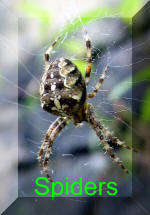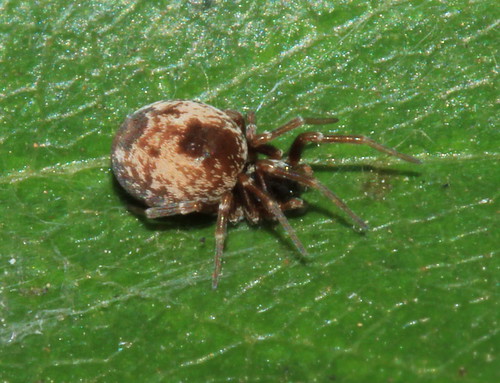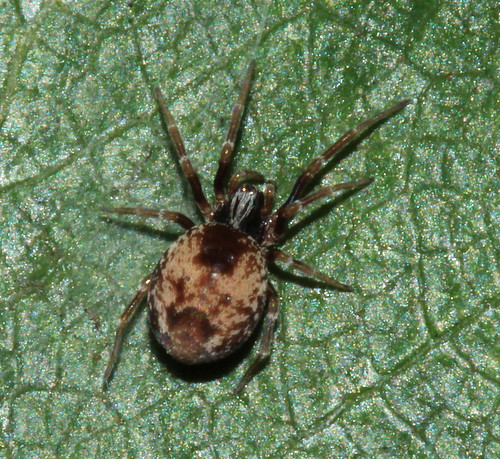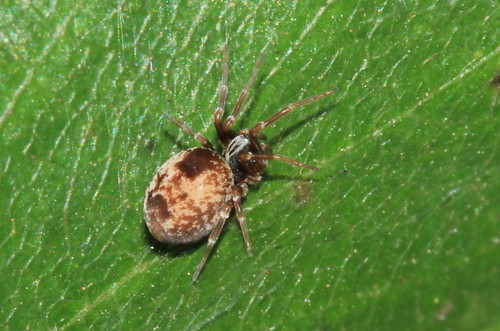BACK TO....

Length A very small (3 mm) spider.
Phenology Adults are found in late spring to mid-summer, with females very occasionally persisting into the autumn. Best from May to July.
Description This is a sexually dimorphic species - the female has a dark and light brown patterned hairy body, the male is more uniformly dark grey or blackish.
Similars care needed
Habitat & Ecology
Dictyna uncinata A species that seems to be found higher in the vegetation than D. arundinacea where it makes its mesh web across the surface of the leaves of bushes and trees. It is commonly found in scrub, hedgerows and woodland where the spider can be beaten off bushes and the foliage of trees along the sides of rides and the edges of clearings. It has been found in gardens and has occasionally been noted on prostrate rockery plants spun up in the dead flower heads of the previousDictyna arundinacea The species is found on low, especially dry or dead vegetation (Jones 1983), in rough grassland or herbage growing at the edges of fields, hedges and woodland rides. It spins its web in the tops of plants which supply rigidity and suitable structural spaces. The old heads of various umbellifers, docks, thistles and plants like Hypericum are favoured situations. On heathland the spider is very common on heather. The spider is not deterred by the prey's size, which is always bitten in the leg until dead. Adults occur from late spring to mid-summer. In June the male seems to stay for a month or more in the female's web where they both live in a rough chamber with several openings
Likely Dictyna uncinata



